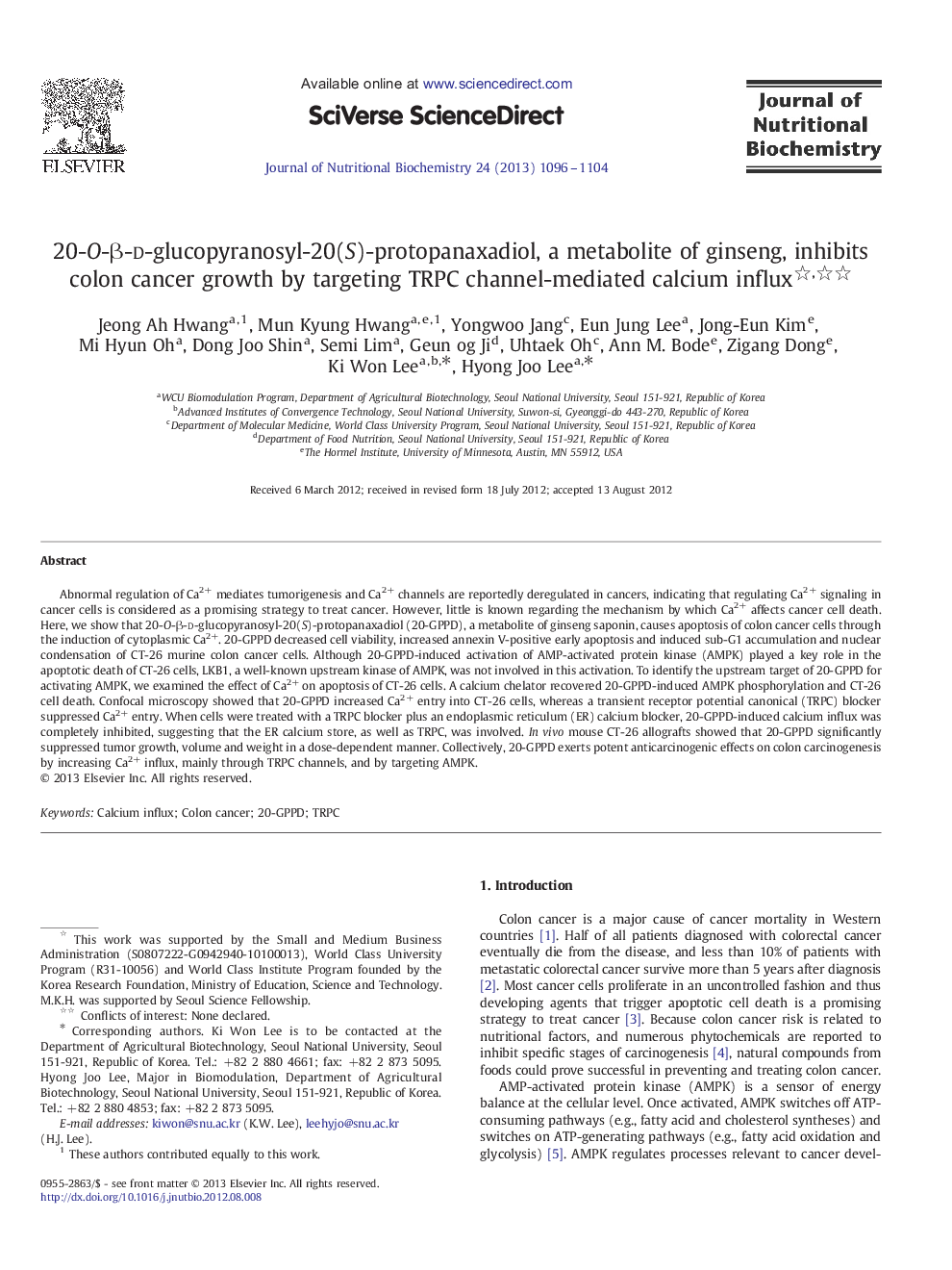| Article ID | Journal | Published Year | Pages | File Type |
|---|---|---|---|---|
| 8337442 | The Journal of Nutritional Biochemistry | 2013 | 9 Pages |
Abstract
Abnormal regulation of Ca2+ mediates tumorigenesis and Ca2+ channels are reportedly deregulated in cancers, indicating that regulating Ca2+ signaling in cancer cells is considered as a promising strategy to treat cancer. However, little is known regarding the mechanism by which Ca2+ affects cancer cell death. Here, we show that 20-O-β-d-glucopyranosyl-20(S)-protopanaxadiol (20-GPPD), a metabolite of ginseng saponin, causes apoptosis of colon cancer cells through the induction of cytoplasmic Ca2+. 20-GPPD decreased cell viability, increased annexin V-positive early apoptosis and induced sub-G1 accumulation and nuclear condensation of CT-26 murine colon cancer cells. Although 20-GPPD-induced activation of AMP-activated protein kinase (AMPK) played a key role in the apoptotic death of CT-26 cells, LKB1, a well-known upstream kinase of AMPK, was not involved in this activation. To identify the upstream target of 20-GPPD for activating AMPK, we examined the effect of Ca2+ on apoptosis of CT-26 cells. A calcium chelator recovered 20-GPPD-induced AMPK phosphorylation and CT-26 cell death. Confocal microscopy showed that 20-GPPD increased Ca2+ entry into CT-26 cells, whereas a transient receptor potential canonical (TRPC) blocker suppressed Ca2+ entry. When cells were treated with a TRPC blocker plus an endoplasmic reticulum (ER) calcium blocker, 20-GPPD-induced calcium influx was completely inhibited, suggesting that the ER calcium store, as well as TRPC, was involved. In vivo mouse CT-26 allografts showed that 20-GPPD significantly suppressed tumor growth, volume and weight in a dose-dependent manner. Collectively, 20-GPPD exerts potent anticarcinogenic effects on colon carcinogenesis by increasing Ca2+ influx, mainly through TRPC channels, and by targeting AMPK.
Keywords
Related Topics
Life Sciences
Biochemistry, Genetics and Molecular Biology
Biochemistry
Authors
Jeong Ah Hwang, Mun Kyung Hwang, Yongwoo Jang, Eun Jung Lee, Jong-Eun Kim, Mi Hyun Oh, Dong Joo Shin, Semi Lim, Geun og Ji, Uhtaek Oh, Ann M. Bode, Zigang Dong, Ki Won Lee, Hyong Joo Lee,
